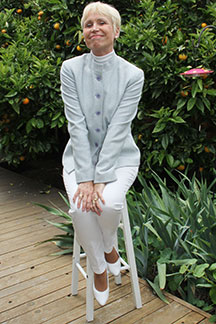Richard von Weizsaecker passed away on January 31, 2015. He was the sixth post-war President of Germany (of West Germany from 1984 to 1990; of the reunited Germany from 1990 to 1994). From 1981 to 1984 he was the Mayor of West Berlin. http://www.dw.de/berlin-pays-last-respects-to-former-president/a-18249449 During his presidency, the Berlin Wall fell and the two Germanys were reunited.
Richard von Weizsaecker’s Life
His grandfather Karl had been the Prime Minister of the Kingdom of Wuerttemberg and had been ennobled in 1897 and raised to the title of Freiherr (Baron) in 1916. Born in 1920 near Stuttgart, Germany, Richard von Weizsaecker was the youngest son of Ernst von Weizsaecker. Richard’s father was a career diplomat who became a senior official in Hitler’s Foreign Ministry. Richard had two brothers and a sister. His oldest brother Carl was a physicist and philosopher and had worked on nuclear fission under Hitler. His middle brother Heinrich was killed in action during World War II. For the most part, Richard grew up in Switzerland and Scandinavia. He later studied philosophy and history in Oxford, Great Britain, and in Grenoble, France. During World War II, he served in the German Army. Following the war, he studied history and law in Goettingen, Germany.
Richard von Weizsaecker struggled with his country’s and his family’s past. His father, who had signed an order to deport 6,000 Jews to Auschwitz, was tried for war crimes during the Nuremberg trials. Richard interrupted his law studies to act as his father’s defense counsel; nonetheless, his father went to prison for his role in Nazi Germany. Richard von Weizsaecker also struggled with his own past. Many of the men who had tried to assassinate Hitler on July 20th 1944 came from his regiment. But he had not been one them. After the war, Richard went into business; he would not have anything to do with politics. He also served as president of a lay assembly of the Lutheran church whose teachings he quietly lived by.
Richard von Weizsaecker’s confronts the past
As President of Germany, he was known to stand for decency, dignity and goodness, and he played a leading role in helping Germany face up to its Nazi past. When Germany was reunited, many said that he was the best spokesman the country could have wished for.
In 1985, on the 40th anniversary of the end of World War II, Richard von Weizsaecker gave a poignant speech in the Bundestag (House of Representatives). In the talk, he articulated the historic responsibility of Germany and the Germans for the crimes of Nazism. He called attention to the link between the Nazi takeover of Germany and the tragedies caused by the Second World War and said, “When the unspeakable truth of the Holocaust became known at the end of the war, all too many of us claimed they had not known anything about it or even suspected anything.” http://www.nytimes.com/1985/05/09/world/all-of-us-must-accept-the-past-the-german-president-tell-s-mp-s.html. “We Germans must look truth straight in the eye – without embellishment and without distortion. . . . There can be no reconciliation without remembrance.”
Richard von Weizsaecker also suggested that younger generations of Germans “cannot profess a guilt of their own for crimes they did not commit,” and that forty years after their surrender in the war they had started, the Germans should face their crimes and their own destruction as honestly as they could. Only then would they understand that the day of their defeat was also the moment of their liberation. http://www.economist.com/news/obituary/21643061-richard-von-weizs-cker-first-president-his-reunited-country
My connection to Richard von Weizsaecker
I have no tangible connection to Richard von Weizsaecker. The only link that loosely connects us is a small chalet in Austria. As a child, I spent five weeks in that mountain cabin. It was there that I discovered my love for the mountains, their splendor and their serenity. My parents had arranged for me to join a group of orphans, lead by the orphanage’s owner. To finance a summer camp experience for her charges, the woman took a handful of paying children along. I was one of those children. For five weeks, we lived in the small chalet: no electricity, no kitchen, no shower facilities. But we hiked our hearts out and breathed in sunshine, beauty and solitude. It was formative experience for me (read “Camp Experiences” in my book, Walled-In: A West Berlin Girl’s Journey to Freedom).
In the 1990s, my husband and I visited Austria and looked up the chalet and the tiny valley it was nestled it. It looked just the way I remembered. When I inquired about its owner, I was told that German President, Richard von Weizsaecker, now owned the chalet. Although we never met, at that moment I felt strangely connected to this man and wondered whether this peaceful spot had helped me to confront his past and to become the gracious man he was known to be.
For a sneak peek at the first 20+ pages of my memoir, Walled-In: A West Berlin Girl’s Journey to Freedom, click “Download a free excerpt” on the home page of http://www.walled-in-berlin.com. Walled-In is a story of growing up in Berlin during the Cold War.










